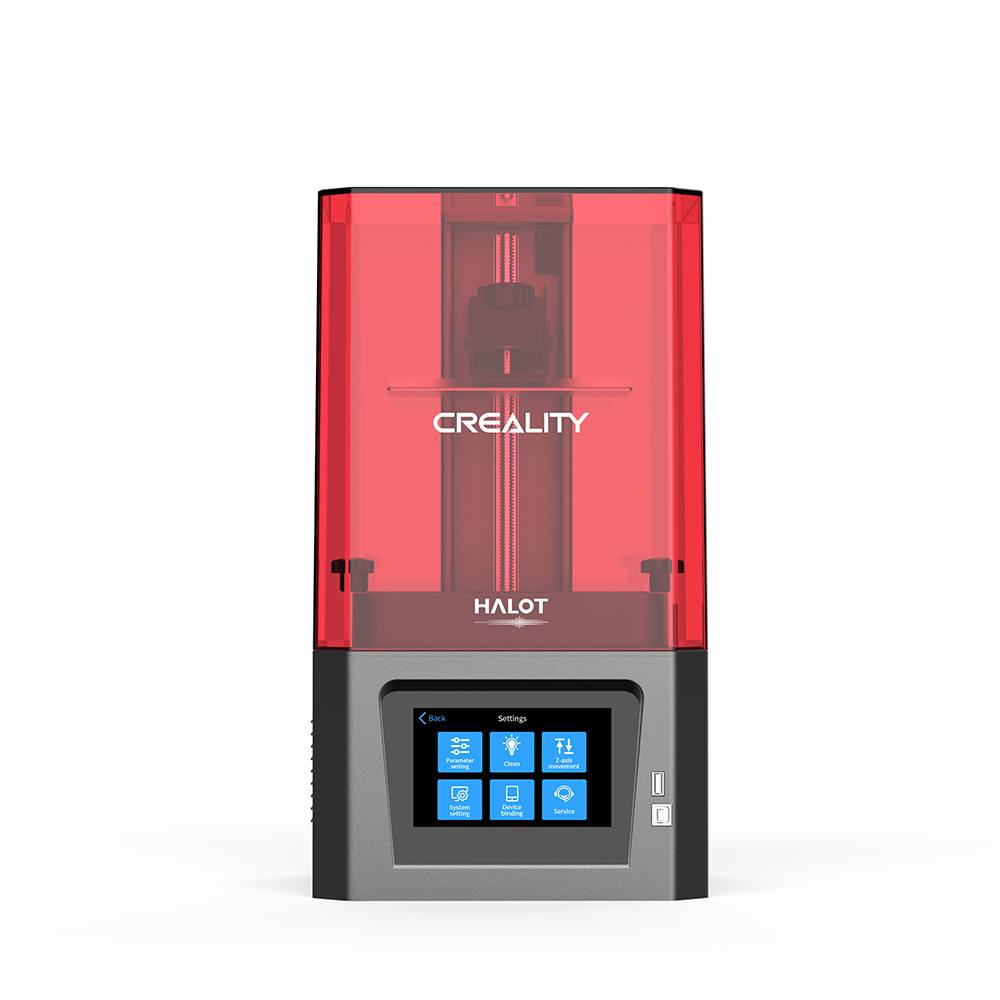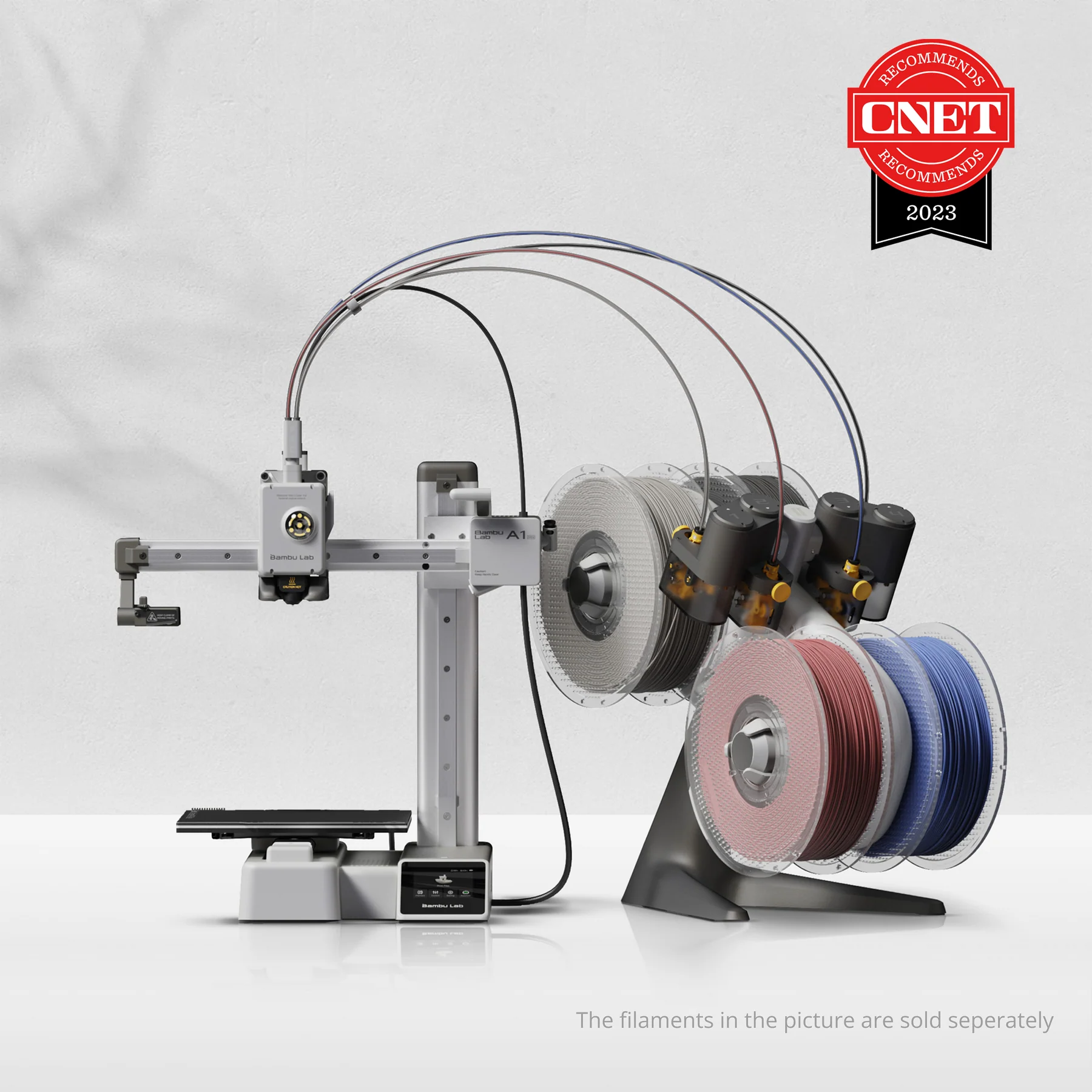Compare Halot One vs A1 Mini
Comparison between the best 3D printers
Choose the best 3D printer at the best price. The cheapest 3D printers are here.
Buy a 3D printer here with 3D Fila.
 |
 |
|
| Model | Halot One |
A1 Mini |
| Printing Material | Resin | Filament |
| Buy Resin for Creality 3D Halot One | Buy Filament forBambu Lab A1 Mini | |
| Estimated price | $250,00 | $549,00 |
| Manufacturer | Creality 3D | Bambu Lab |
| Release Year | 2021 | 2023 |
| Print Volume [mm] | 127x80x160 | 180x180x180 |
| Printer Size [mm] | 221x221x404 | 315x347x365 |
| Weight [kg] | 7,1 | 5,5 |
| Power Loss Recovery | NO | YES |
| Maximum Resolution [mm] | 2k | 0,1 |
| Processor | 32-bit Silenciosa | |
| Display | Touchscreen 2,4'' | |
| Power Supply | 150 W | |
| Connectivity | Wifi, Bambu bus, Cartão SD | |
| Operating systems | Windows, Mac, Linux | Windows, Linux, Macbook |
| Date of registration in the system | 2022-10-11 | 2024-04-10 |
| Release date | 2021 | 2023 |
| Extra features | Crealitys Halot-One printer stands out with several innovative features. It has a high-resolution touchscreen, providing an intuitive and responsive interface. Its quiet printing capability is remarkable, ideal for environments where noise is a concern. Assembly and setup are simple, with automatic functions facilitating quick start. Among its features, remote monitoring and adjustments via the Creality Cloud app stand out, simplifying remote print management. Replacing the FEP in the resin vat is easy, and the printer even includes extra FEP sheets. Top cover removal detection increases safety by automatically pausing printing. In addition, its integral light source promises high uniformity, optimizing print quality. | The Bambu Lab A1 Mini stands out not only for its impressive speed and automatic calibration, but also for its multi-color printing capability thanks to AMS Lite. This innovative system makes multi-color printing easy, making it accessible to everyone. AMS Lite, specific to the A1 Mini, supports up to four different materials simultaneously, providing creative freedom without complications. With comprehensive sensors for energy monitoring and recovery, a camera for timelapses and Wi-Fi control, the A1 Mini and AMS Lite together offer an intuitive and advanced 3D printing experience, ideal for materials such as PLA, PETG and TPU, and designed for simplicity and fast maintenance with quick-change nozzles. |
| Support for multiple colors and materials (AMS and CFS) | NO | YES |
Notes * |
||
| Cost-benefit | 8 / 10 | 7 / 10 |
| Hardware | 0.6 / 10 | 4.8 / 10 |
| Tela | . | . |
| Print volume | 3 / 10 | 3 / 10 |
| Performance | 9 / 10 | 4 / 10 |
Conclusion |
| In comparing the Creality 3D Halot One and the Bambu Lab A1 Mini, both printers exhibit unique strengths that cater to different user needs and preferences. The Halot One is an economical option that appeals to beginners or those who prioritize cost-effectiveness without sacrificing print quality. With its compact design, simple assembly, and intuitive touchscreen interface, it allows for easy operation. The notable features such as remote monitoring and safety enhancements add to user convenience, making it well-suited for personal and hobbyist use. However, its limited print volume and absence of power loss recovery might deter users who require more extensive capabilities or longer print jobs. On the other hand, the A1 Mini, though at a higher price point, delivers enhanced versatility and functionality. Its larger print volume and advanced features like multi-color printing through the AMS Lite system open up creative possibilities that the Halot One lacks. The built-in camera, energy recovery system, and focus on ease of maintenance make the A1 Mini particularly appealing to users seeking a more sophisticated 3D printing experience. In conclusion, if you are looking for a budget-friendly and user-friendly printer, the Creality 3D Halot One is an excellent choice. However, for those willing to invest more for advanced features and greater versatility, the Bambu Lab A1 Mini stands out as the superior option, particularly for more complex or varied printing projects. Ultimately, the decision should align with the user’s specific needs, whether they prioritize budget, ease of use, or advanced capabilities. |

